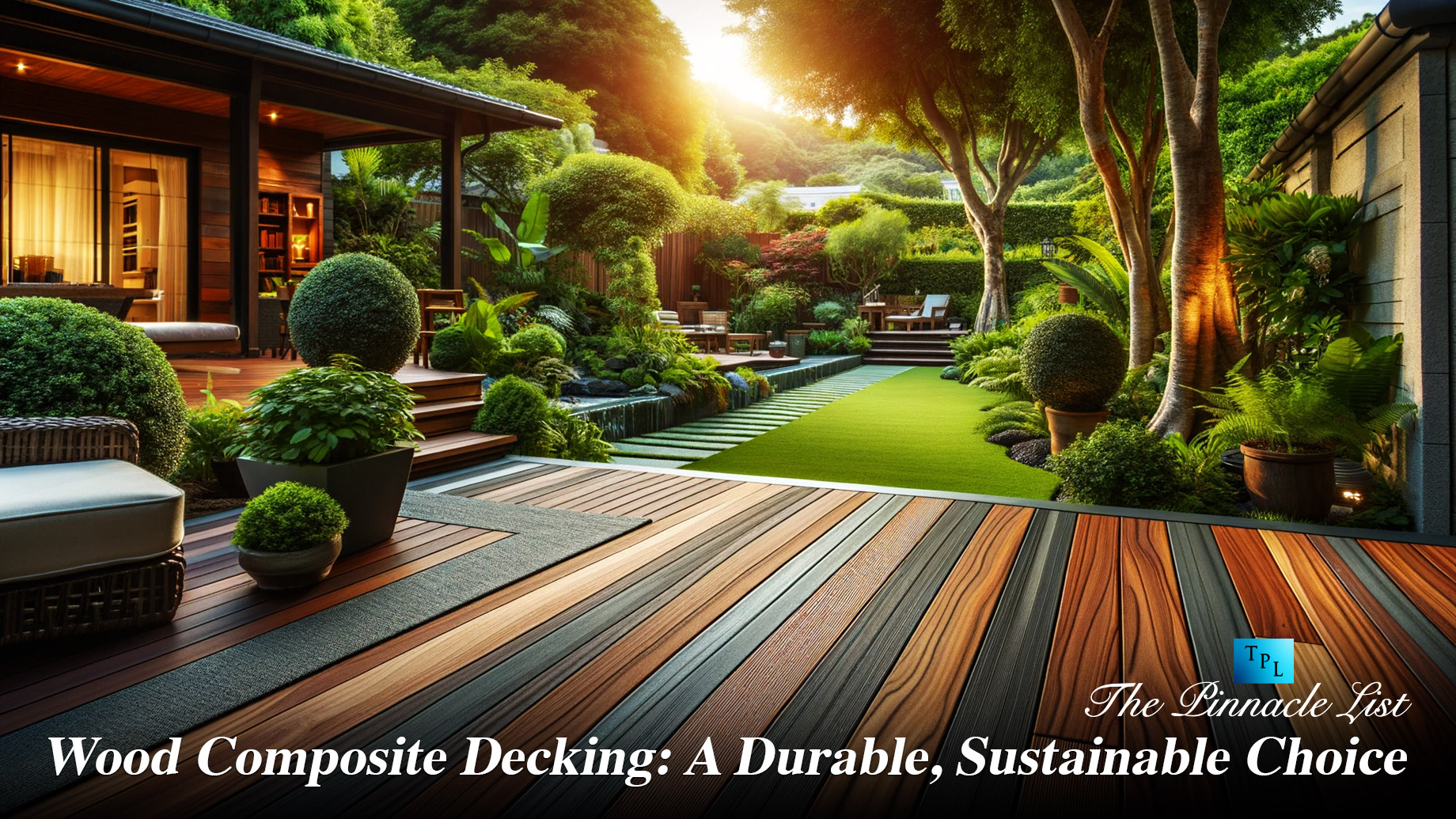
Decking decisions became harder! Like me, you may be deciding between wood and composite decking. Have you considered your choice’s sustainability and durability?
This article explores wood composite decking, a stylish and responsible option. We’ll discuss how this alternative lasts and protects the environment.
Discover the truth about wood composite decking with me. It’s more than a gorgeous facade—it shows how far we’ve come in our search for beauty, durability, and sustainability.
Advantages of Wood Composite Decking
Becoming acquainted with the benefits of wood composite decking assists in making a well-rounded decision. Various sustainability factors, durability, and maintenance considerations factor into the benefits of this modern decking choice.
Sustainability Factors
Recycling Plastic Waste
The production of wood composite decking involves the use of plastic waste. Composite decking manufacturers recycle discarded plastic items, transforming them into durable and aesthetic decking materials. This eradicates an abundance of single-use plastics from the environment, underlining the role of composite decking in progressing towards sustainable living.
Conserving Natural Resources
Wood composite decking assists in forest conservation. Combining wood fiber or wood flour with thermoplastics during production significantly reduces the consumption of whole logs. This marriage of materials complements conservation efforts, making wood composite decking a friendly choice for Mother Earth.
Energy Efficiency
The insulation properties of wood composite decking contribute to its energy efficiency. Its ability to absorb and retain heat reduces the need for artificial heating in cold seasons, resulting in less energy consumption.
Contributing to the Circular Economy
Wood composite decking is recyclable at the end of its lifespan, contributing to a circular economy. At the end of its long life, it’s not merely discarded but repurposed, further extending its utility.
Durability and Maintenance
Longevity
The life of wood composite decking surpasses that of traditional wood. Proven to last for numerous decades, it provides a sustained return on investment, making it an ideal choice for a long-lasting outdoor living area.
Low Maintenance
Maintaining a fresh look with wood composite decking is painless. A simple wash with soap and water is sufficient, eliminating the hassles of regular staining or painting.
Weather Resistance
Wood composite decking’s ability to resist rot and insect damage accounts for its weather resistance. Whether it’s a downpour or scorching sun, your decking stands tall, free of warps and cracks.
Aesthetic Appeal
Undeniably, the aesthetic appeal of wood composite decking is a major advantage. Numerous color options and grain patterns are available, providing the beautiful look of natural wood without damaging our forests. Offering an ardent invitation to enjoy the outdoors, it’s a winner in terms of looks.
Technical Attributes of Wood Composite Decking
As we move deeper into the fabric of wood composite decking, certain technical attributes emerge. These attributes separate this decking material from traditional wood and other alternatives. This section examines these attributes, particularly in terms of eco-friendliness and aesthetics.
Eco-Friendly Composite Decking Options
For those conscious of the environment, wood composite decking is an optimal choice. Its composition, consisting primarily of wood particles and recycled plastic, reduces landfill waste. Notably, many manufacturing entities engage in closed-loop recycling, meaning they use and recycle their plastic materials internally.
Some fascinating technical aspects enhance its eco-friendliness:
- Composition: The 50/50 blend of wood particles and recycled plastic makes it a highly sustainable material.
- Production process: Manufacturing requires less energy compared to traditional wood decking, leading to a reduction in carbon footprint.
- Maintenance: The long lifespan, supported by low maintenance, ensures less replacement. This means fewer resources are used over time.
- Versatility: It’s suitable for various outdoor applications such as patios, walkways, and poolside decks. Such versatility stems from its high resistance to factors like moisture and temperature fluctuations, which can quickly degrade traditional wood decks.
- Aesthetics: This decking material offers a range of colors and texture options, mimicking everything from light, fresh-cut cedar to the warm, dark tones of tropical hardwoods. Such a spectrum allows homeowners to match the decking material with the architectural style of their house and the nature surrounding it.
- Uniformity: Unlike natural wood, it provides excellent consistency in color and texture, having far fewer imperfections such as knots or cracks. This uniformity contributes to a clean, manicured look, elevating the visual appeal of outdoor spaces.
Conclusion

In terms of durability, wood composite decking exceeds traditional wood. This durable decking is made from wood pulp and recycled polymers, making it resistant to weather, fungal decay, and insect damage. It lasts longer than regular wood since it doesn’t warp or fracture. Wood composite decking does not need painting, staining, or sealing—just regular sweeping and occasional cleaning with a deck cleaner to maintain its appearance. Its production uses recycled materials, which reduces plastic waste, natural resource consumption, and energy and carbon emissions. This decking also has a variety of colors and textures that replicate wood’s natural beauty without its downsides, making it a practical and attractive option. Environmental sustainability is another benefit of wood composite decking—for people who want authentic wood beauty, durability, and low maintenance. Durability, minimal maintenance, sustainability, and aesthetics are all combined in wood composite decking for sustainable outdoor living spaces.